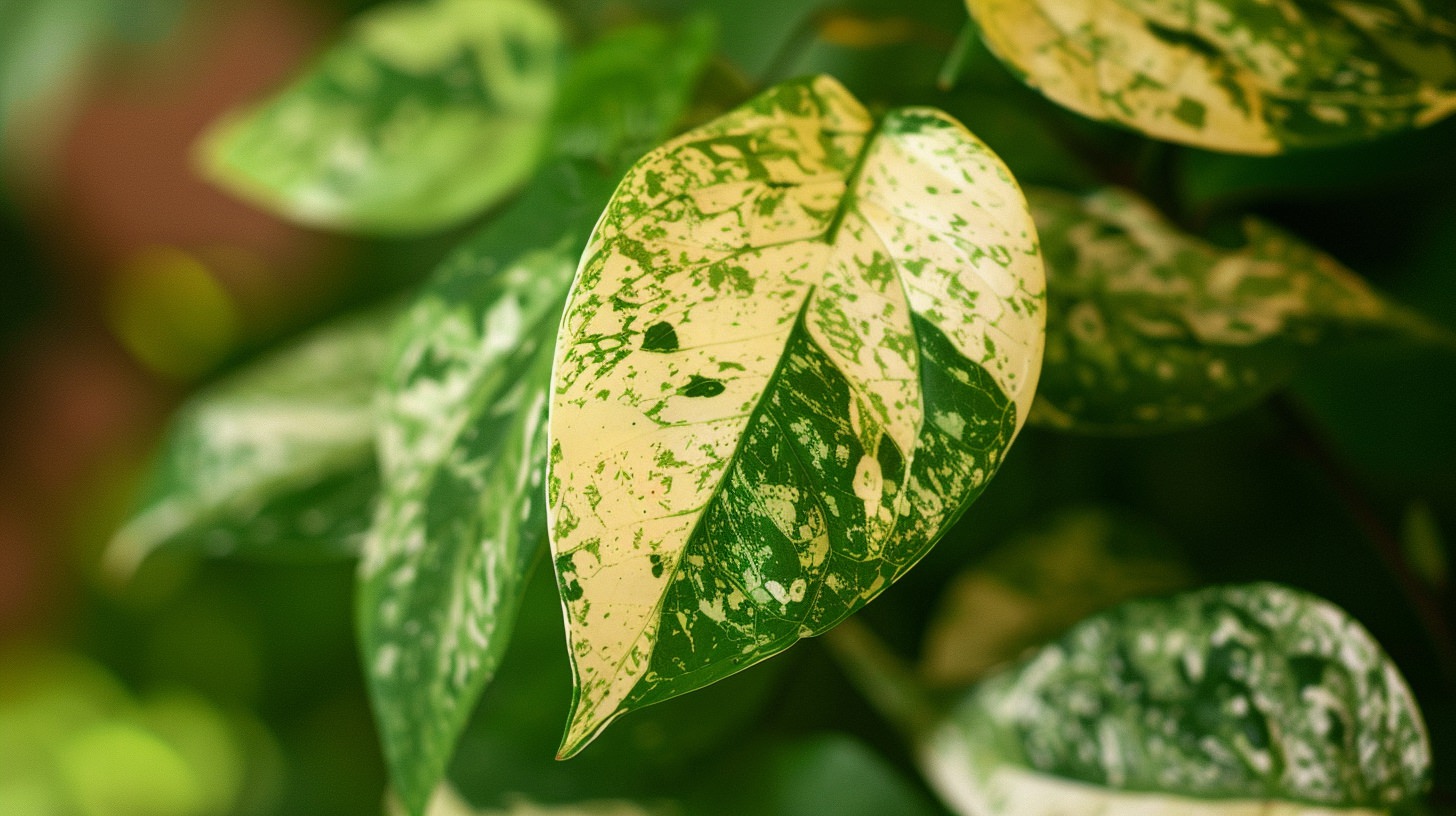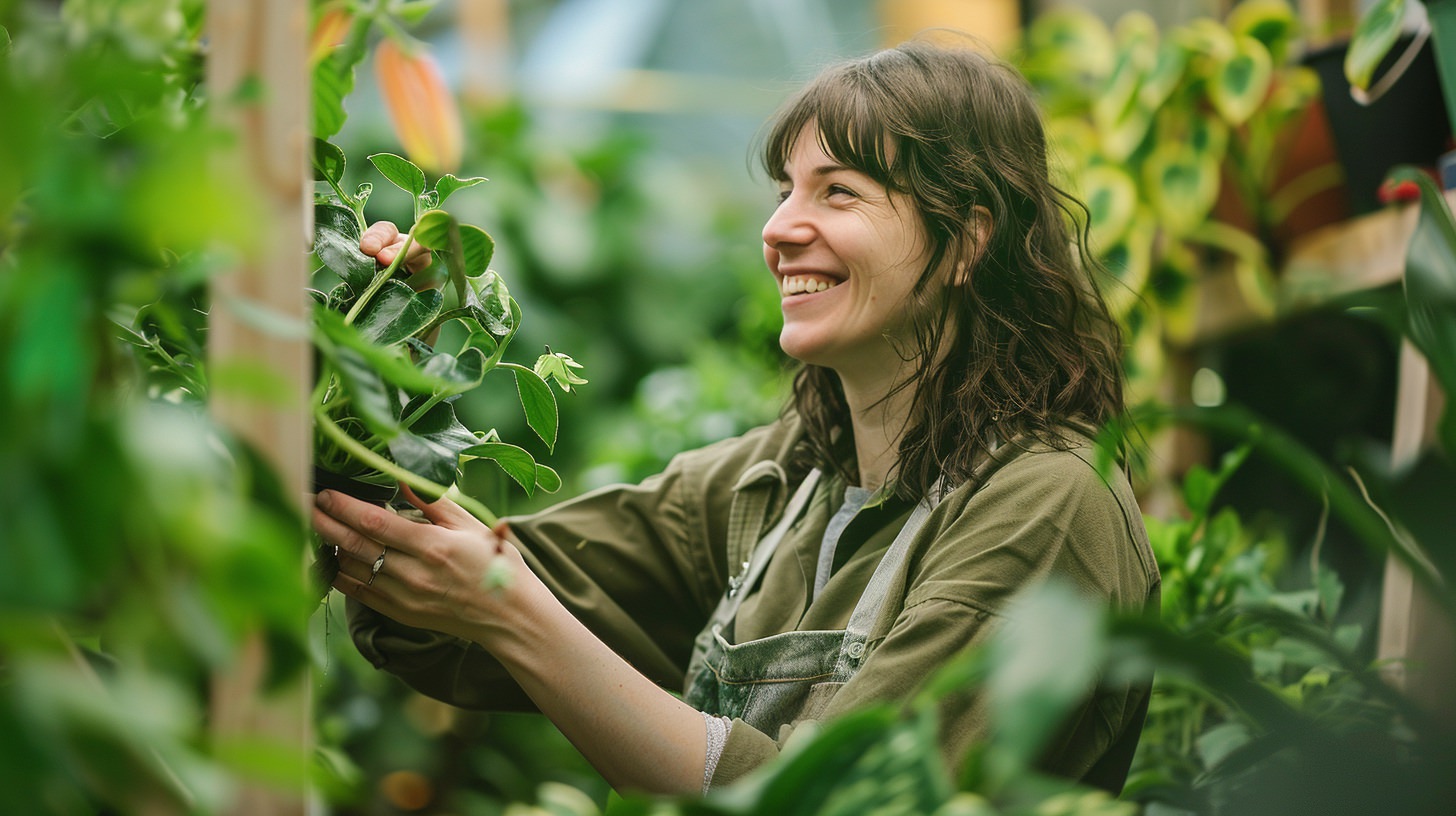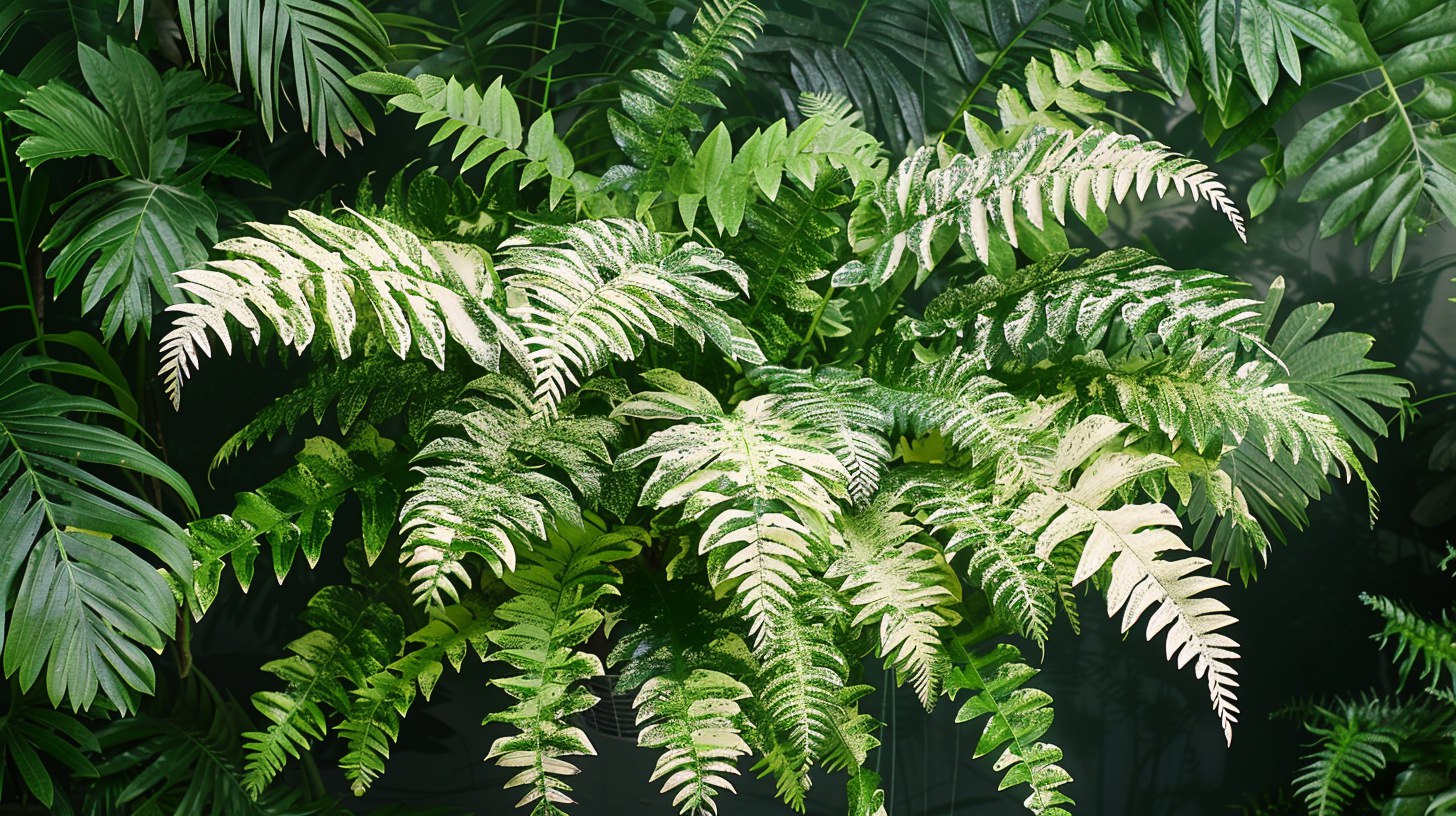
Green spaces are not only essential for our well-being but also serve as a canvas for nature’s beauty to flourish. Have you ever considered the transformative power of variegated plants in enhancing these green spaces? In this blog post, we delve into the world of green spaces enhancement with variegated plants, exploring how these unique species can elevate the aesthetics, sustainability, and biodiversity of your outdoor environments. Let’s uncover the secrets to creating striking and eco-friendly landscapes with the vibrant touch of variegation.
Benefits of Variegated Plants in Green Space Enhancement
Variegated plants, with their unique patterns and colors, play a crucial role in enhancing the beauty and vibrancy of green spaces. These plants not only add visual interest but also offer numerous benefits for the overall well-being of the environment and its inhabitants. Let’s explore the key advantages of incorporating variegated plants in your green space enhancement efforts.
Variegated Plants: Definition and Characteristics
Variegated plants are characterized by their multicolored leaves, with patterns of different hues such as white, yellow, or pink interspersed with green. This variation adds a striking contrast to the typical green foliage found in most plants, making them stand out in any landscape setting.
Importance of Variegated Plants in Enhancing Green Spaces
- Variegated plants provide a pop of color and visual interest to otherwise monotonous green areas.
- The unique patterns and textures of variegated leaves create focal points and add depth to landscaping designs.
- These plants can thrive in a variety of environmental conditions, making them versatile options for different types of green spaces.
Visual Appeal and Aesthetic Value of Variegation
- Variegated plants add a touch of elegance and sophistication to gardens, parks, and outdoor spaces.
- The contrast between the different colors in variegated plants creates a dynamic and eye-catching display.
- Incorporating variegated plants in green spaces can elevate the overall aesthetic appeal and create a harmonious blend of colors and textures.
Incorporating variegated plants in your green space enhancement projects can transform ordinary landscapes into spectacular showcases of nature’s beauty. Whether used as focal points, borders, or accents, variegated plants bring a touch of uniqueness and charm to any outdoor setting.
Choosing the Right Variegated Plants for Your Green Space
When it comes to selecting variegated plants for your green space enhancement project, it’s essential to consider various factors to ensure their optimal growth and visual impact. Here’s a guide to help you choose the right variegated plants for your specific needs:
Factors to Consider When Selecting Variegated Plants
- Light conditions: Determine the amount of sunlight your green space receives and choose variegated plants that thrive in either full sun, partial shade, or full shade.
- Climate suitability: Select variegated plants that are well-suited to the climate and weather conditions of your region to ensure their long-term viability.
- Soil requirements: Consider the soil quality and drainage in your green space to choose variegated plants that will flourish in the existing soil conditions.
Ideal Variegated Plant Species for Different Light Conditions
-
Full Sun:
- Variegated Yucca (Yucca filamentosa): Thrives in bright sunlight and well-drained soil.
- Japanese Forest Grass (Hakonechloa macra): Adds a touch of elegance to sunny spots with its variegated foliage.
-
Partial Shade:
- Hosta (Hosta spp.): Known for their striking variegated leaves and tolerance to dappled sunlight.
- Variegated Solomon’s Seal (Polygonatum odoratum): Ideal for adding a delicate touch to shaded areas.
-
Full Shade:
- Variegated Vinca (Vinca minor ‘Illumination’): Brightens up dark corners with its colorful foliage.
- Lungwort (Pulmonaria spp.): Features silver-spotted leaves that thrive in low-light conditions.
Variegated Plants for Indoor and Outdoor Green Spaces
-
Indoor environments: Consider variegated houseplants like Spider Plant (Chlorophytum comosum) or Variegated Rubber Plant (Ficus elastica) for adding a splash of color to interior spaces.
-
Outdoor gardens: Explore options such as Japanese Maple (Acer palmatum ‘Ukigumo’) or Variegated Liriope (Liriope muscari) for enhancing the beauty of your outdoor green space.
By carefully selecting variegated plants based on light conditions, climate suitability, and soil requirements, you can create a harmonious and visually appealing green space that thrives with vibrant colors and textures.
Design Tips for Incorporating Variegated Plants in Landscapes
When it comes to designing your green space with variegated plants, strategic placement and creative combinations can elevate the overall look and feel of your landscape. Here are some valuable design tips to help you incorporate variegated plants effectively:
Creating Contrast and Focal Points with Variegated Plants
-
Use variegated plants strategically to create focal points that draw the eye and add visual interest to your landscape.
-
Pair variegated plants with solid-colored foliage to create striking contrasts and emphasize the unique patterns of the variegated leaves.
-
Consider using variegated plants near pathways, entrances, or seating areas to create inviting focal points in your green space.
Using Variegated Plants for Borders and Edging
-
Edge your flower beds or walkways with variegated plants to define the boundaries and add a polished look to your landscaping.
-
Combine low-growing variegated ground covers like Variegated Liriope (Liriope muscari) with taller variegated shrubs for a layered border effect.
-
Variegated plants with compact growth habits can be ideal for creating neat borders that add structure and visual appeal to your green space.
Mixing Variegated Plants with Solid-Colored Plants for Balance
-
Strike a balance in your landscaping by mixing variegated plants with solid-colored foliage to create a harmonious blend of colors and textures.
-
Consider the color scheme of your variegated plants and choose solid-colored plants that complement or contrast with the variegated foliage.
-
Experiment with different plant combinations to achieve a balanced and visually appealing landscape design that showcases the beauty of variegated plants.
By incorporating variegated plants strategically in your landscape design and paying attention to contrast, focal points, borders, and plant combinations, you can create a visually stunning green space that showcases the unique beauty of variegated foliage. Remember to experiment with different layouts and combinations to find the perfect design that suits your aesthetic preferences.
Maintenance and Care of Variegated Plants for Long-Term Green Space Enhancement
Proper maintenance and care are essential for ensuring that your variegated plants thrive and continue to enhance the beauty of your green space over the long term. By following these guidelines, you can keep your variegated plants healthy and vibrant:
Watering and Fertilizing Variegated Plants Correctly
-
Water variegated plants regularly, ensuring that the soil is moist but not waterlogged.
-
Avoid overwatering variegated plants, as excessive moisture can lead to root rot.
-
Fertilize variegated plants during the growing season with a balanced fertilizer to promote healthy growth and vibrant foliage.
Preventing Diseases and Pests in Variegated Plants
-
Monitor variegated plants regularly for signs of pests such as aphids, mites, or fungal diseases.
-
Treat any pest infestations promptly using environmentally friendly pest control methods.
-
Practice good garden hygiene by removing any debris or dead leaves that may harbor pests or diseases.
Pruning and Grooming Variegated Plants for Healthy Growth
-
Prune variegated plants as needed to maintain their shape and size, removing any dead or diseased foliage.
-
Use sharp, clean pruning tools to prevent the spread of diseases between plants.
-
Groom variegated plants by removing spent flowers or yellowing leaves to encourage new growth and flowering.
By providing proper watering, fertilization, disease prevention, and regular maintenance through pruning and grooming, you can ensure that your variegated plants remain healthy and vibrant, contributing to the long-term enhancement of your green space. Remember to observe your plants regularly and adjust your care routine based on their specific needs to promote optimal growth and beauty.
External Link: The Home Depot - Gardening Supplies
Variegated Plants: Sustainable and Eco-Friendly Options for Green Space Enhancement
Variegated plants not only bring aesthetic appeal to green spaces but also offer sustainable and eco-friendly benefits that contribute to a healthier environment. By choosing variegated plants for your green space enhancement projects, you can take a step towards creating a more sustainable landscape. Here are some reasons why variegated plants are considered sustainable choices:
Benefits of Using Variegated Plants for Sustainable Landscaping
-
Variegated plants require less water than traditional grass lawns, reducing water consumption and promoting water conservation.
-
The unique patterns and colors of variegated leaves can attract pollinators such as bees and butterflies, supporting biodiversity in your green space.
-
Variegated plants are often low-maintenance and require fewer chemical interventions, contributing to a more natural and eco-friendly garden environment.
Variegated Plants as Low-Maintenance and Drought-Tolerant Options
-
Many variegated plant species are drought-tolerant and can withstand periods of dry weather, reducing the need for frequent watering.
-
Variegated ground covers can suppress weeds and reduce the need for chemical herbicides, promoting a healthier and more sustainable garden ecosystem.
-
Incorporating variegated plants in xeriscaping projects can help conserve water resources and create visually appealing landscapes with minimal environmental impact.
Contribution of Variegated Plants to Biodiversity in Green Spaces
-
Variegated plants attract a diverse range of beneficial insects and wildlife, enhancing the ecological balance of your green space.
-
By creating habitat and food sources for local fauna, variegated plants play a role in supporting a healthy and biodiverse ecosystem.
-
The unique foliage patterns and textures of variegated plants add visual interest and diversity to your landscape, enriching the overall biodiversity of your green space.
Choosing variegated plants for your green space enhancement not only adds beauty and visual appeal but also promotes sustainability and biodiversity. By incorporating these eco-friendly options into your landscaping projects, you can create a vibrant and environmentally conscious garden that benefits both nature and your well-being.
External Link: Lowe’s - Sustainable Gardening Products
FAQs (Frequently Asked Questions)
How do variegated plants contribute to the visual appeal of green spaces?
Variegated plants offer a unique blend of colors and patterns that create eye-catching focal points and add depth to landscaping designs. Their vibrant foliage adds a touch of elegance and sophistication to gardens, parks, and outdoor spaces, enhancing the overall aesthetic value of green areas.
Are variegated plants suitable for all types of green spaces?
Variegated plants come in a variety of species that can thrive in different light conditions, making them versatile options for various types of green spaces. Whether for indoor environments, outdoor gardens, or landscaping projects, there are variegated plant options suitable for different settings.
How can I care for variegated plants to ensure their long-term health?
Proper maintenance and care, including regular watering, fertilizing, monitoring for pests and diseases, and pruning as needed, are essential for the optimal growth and health of variegated plants. By following a consistent care routine, you can ensure that your variegated plants continue to enhance your green space for years to come.
Can variegated plants attract wildlife to my garden?
Variegated plants with their diverse foliage patterns and colors can attract beneficial insects like bees and butterflies, enhancing the biodiversity of your garden. By providing habitat and food sources for local fauna, variegated plants contribute to creating a vibrant and ecologically balanced ecosystem.
What are the eco-friendly benefits of incorporating variegated plants in green spaces?
Variegated plants are considered sustainable options for landscaping due to their water-saving capabilities, low-maintenance requirements, and ability to support biodiversity. By choosing variegated plants for your green space enhancement projects, you can create environmentally friendly landscapes that promote a healthier ecosystem.


